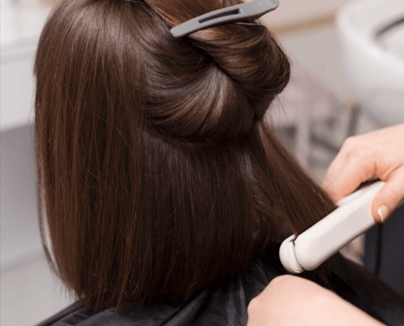Treatment Overview
The Valentine Laser Protocol is a multi-step combination laser treatment approach developed and popularized in Korean dermatology for the removal of complex pigmented and vascular birthmarks. Rather than relying on a single device, this protocol integrates multiple laser wavelengths—often including Pico, Q-Switched Nd:YAG, Alexandrite, Dye Laser, and Fractional lasers—in a carefully sequenced method tailored to the birthmark’s depth, color, and type.
The Valentine Protocol is designed to maximize pigment clearance while minimizing side effects such as scarring or post-inflammatory hyperpigmentation (PIH). This protocol is especially useful for difficult congenital lesions like café-au-lait spots, nevus of Ota, Becker’s nevus, and vascular-pigment mixed birthmarks.
Purpose & Benefits
- Comprehensive Birthmark Clearance: Effective for flat, deep, vascular, or mixed lesions.
- Multi-Wavelength Approach: Targets different pigment depths in one session.
- Safe for Asian Skin: Protocol uses low-fluence, layered energy delivery to prevent PIH rebound.
- Versatility: Can treat congenital nevi, café-au-lait spots, and vascular malformations.
- Customizable: Each patient’s plan is adapted depending on lesion type, skin type, and response.
Ideal Candidates
The Valentine Laser Protocol in Korea is recommended for:
- Patients with stubborn or complex congenital birthmarks not fully responsive to single-laser therapy.
- Individuals with mixed pigmented-vascular birthmarks.
- Patients seeking higher clearance rates with minimized risks.
- Adults and children under specialist dermatology care.
Possible Risks & Complications
Although considered advanced and safe in Korean clinics, possible side effects include:
- Redness & Swelling: Temporary, subsides in a few days.
- Crusting or Bruising: Common in vascular lesions.
- Temporary Darkening: Pigment may darken before fading.
- Rare Risks: Hypopigmentation or PIH if aggressive settings are used (minimized with Korean low-fluence protocols).
Surgical Techniques Used
The Valentine Protocol typically combines:
- Pico or Q-Switched Nd:YAG (1064/532 nm): Breaks down deep and superficial melanin.
- Alexandrite (755 nm): Effective for congenital pigmented lesions and stubborn pigment.
- Dye Laser (595 nm): Targets vascular components in port-wine stains and hemangiomas.
- Fractional CO₂ or Er:YAG: Improves texture and supports pigment clearance.
Protocol: Usually 4–8 sessions, spaced 4–6 weeks apart. The exact sequence and devices vary by birthmark type.
Recovery & Aftercare
Immediately: Mild redness, swelling, or warmth.
3–7 Days: Treated areas may crust or bruise, especially in vascular lesions.
1–2 Weeks: Gradual lightening of pigmentation or vascular redness.
Aftercare Tips:
- Strict use of SPF 50+ sunscreen to prevent rebound pigmentation.
- Apply soothing creams and barrier-strengthening serums.
- Avoid scratching or peeling scabs.
- Limit heat exposure (saunas, hot baths, workouts) for 3–5 days.
Results & Longevity
- After 1 Session: Early pigment softening and vascular fading.
- After 2–3 Sessions: Noticeable reduction in birthmark visibility.
- After 4–6 Sessions: Significant clearance of most pigmented and vascular birthmarks.
- Long-Term: Many congenital lesions show permanent results; some require maintenance.
Treatment Process in Korea
Consultation & Skin Analysis
- Dermatologist identifies birthmark type (pigmented, vascular, or mixed).
- Protocol customized to target multiple pigment layers safely.
Preparation
- Cleansing, protective eyewear, and numbing cream.
Valentine Protocol Session
- Step 1: Superficial pigment addressed with Pico or 532 nm Nd:YAG.
- Step 2: Deep pigment treated with 1064 nm Nd:YAG or Alexandrite.
- Step 3: Vascular components targeted with Dye Laser if present.
- Step 4: Fractional resurfacing for texture correction (if needed).
- Duration: 30–60 minutes depending on lesion size.
Post-Treatment Care
- Cooling mask or antioxidant serum applied.
- Sunscreen and hydration emphasized.
Follow-Up
- 4–8 sessions recommended for comprehensive results.
Unique Korean Advantages
- Protocol Innovation: Valentine Laser Protocol originated in Korea.
- Expert Combination: Korean dermatologists excel in blending multiple lasers safely.
- Asian Skin Adaptation: Fluence levels designed to avoid PIH rebound.
- Comprehensive Care: Programs often paired with brightening drips or regenerative boosters.
- Globally Recognized: Korean clinics are reference centers for advanced pigmentation protocols.
Cost Range (Estimated)
- Single Session (multi-laser): USD 300 – 600
- 4–6 Session Package: USD 1,500 – 3,000
- Premium Combination Program (Valentine Protocol + Boosters): USD 2,500 – 4,000
Additional Costs:
- Consultation: USD 20 – 50
- Add-ons (Glutathione/Vitamin C drips, TXA serums): USD 100 – 200
- Regenerative boosters (PRP, exosomes, Rejuran): USD 200 – 500
Example Korean Packages:
- Basic Valentine Protocol (3 sessions): USD 900–1,200
- Advanced Program (Valentine + Whitening Drips): USD 1,800–2,200
- Premium Program (Valentine + Pico + Boosters): USD 2,800–4,000
Popular Clinics in Seoul
- Oracle Dermatology: Valentine Protocol for congenital pigmented lesions.
- Banobagi Dermatology: Multi-laser Valentine approach for mixed lesions.
- Renewme Skin Clinic: Valentine Protocol with whitening serums and boosters.
- View Plastic & Dermatology: Valentine Protocol + Fractional for pigment + texture.
- Chaum Anti-Aging Center: Premium Valentine programs with regenerative therapies.




